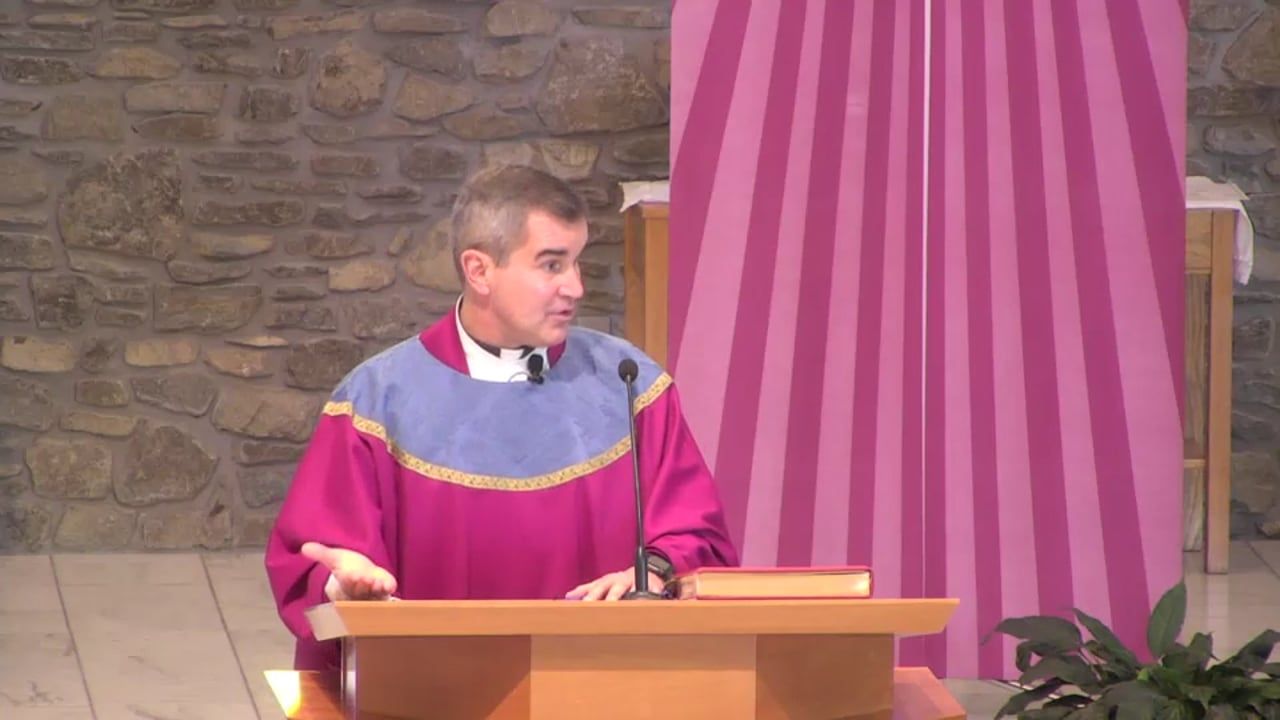Second Sunday of Advent - Fr. Pete Iorio
December 5, 2020 - 5:00 PM
December 6, 2020 - 11:00 AM
Audio Recording
It has been 8½ months for some people since they have seen their loved ones. They are in strict quarantine for their own safety. It is not easy to patiently wait until it is safe to be together again. Many are so ready for this to be over and to get on with our lives again.
If we think 8 or 9 months is unbearable, what about the people of Israel? They had been exiled from their homeland and captive in Babylon for 70 years. When the prophet Isaiah gets on the scene, they are back home, and it is taking much longer to feel the presence of God. Isaiah speaks words of HOPE to them: Comfort, give comfort to my people says your God. The people of Israel had also been waiting for hundreds of years for the promised Messiah. John the Baptist cries out that now is the time of fulfillment. Could this really be true? What hope and expectation John brings.
Along with hope, another virtue is needed. That virtue is patience. St. Peter talks about it in his letter in the second reading. (Do not ignore this one fact, beloved, that with the Lord one day is like a thousand years and a thousand years like one day.) Peter gives insight into the timelessness of God. We, however, are bound by time. What causes us anxiousness and worry is when we do not live in the here and now which is called the present moment. Certain spiritual practices have helped me to be a more patient person and given me the ability to trust in the ebb and flow of life because I trust more in the presence of God in everything. Peter continues “...but [the Lord] is patient with you, not wishing that any should perish but that all should come to repentance.”
God’s purposes become revealed through our practice of patience. In a time of waiting, repentance or conversion is not only possible but desirable. Advent is a time of patient waiting. I love how Dutch priest Fr. Henri Nouwen describes this patient waiting. He said, “We wait for God with patience. But patience does not mean passivity. Waiting patiently is not like waiting for the bus to come, the rain to stop, or the sun to rise… (and I might add nor is it waiting for the vaccine to become available to all.) It is an active waiting in which we live the present moment to the full in order to find there the signs of the One we are waiting for.
For me, this is so important because it connects to Jesus on the Cross: The word patience comes from the Latin verb patior which means “to suffer.” Waiting patiently is suffering through the present moment, tasting it to the full, and letting the seeds that are sown in the ground on which we stand grow into strong plants. Waiting patiently always means paying attention to what is happening right before our eyes and seeing there the first rays of God’s glorious coming.
In the Gospel, the cry of John the Baptist to repent and change our ways should resonate in the heart and soul of each person here. We all have our areas of sin that need to be named by ourselves and for ourselves. It is all too easy to pick on the sins and shortcomings of others. Our conscience is the voice to accuse myself.
I would like to end with this story of a famous Catholic. It may not be true, but it makes a point.
Leonardo da Vinci painted the fresco (wall painting), in Santa Maria delle Grazie church in Milan in three years (1495-1498). At the time that Leonardo da Vinci painted "The Last Supper," he had an enemy who was a fellow-painter. Da Vinci had had a bitter argument with this man and despised him. When Da Vinci painted the face of Judas Iscariot at the table with Jesus, he used the face of his enemy so that it would be present for ages as the man who betrayed Jesus. While painting this picture, he took delight in knowing that others would actually notice the face of his enemy on Judas. As he worked on the faces of the other disciples, he often tried to paint the face of Jesus but could not make any progress. Da Vinci felt frustrated and confused. In time, he realized what was wrong. His hatred for the other painter was holding him back from finishing the face of Jesus. Only after making peace with his fellow-painter and repainting the face of Judas was he able to paint the face of Jesus and complete his masterpiece.
That little voice called conscience worked on Leonardo to help him repent/change his ways from bitterness and hatred to forgiveness and love of enemy. I believe that part of Leonardo’s repentance came about by living moment by moment as he did his work as a master painter. Patiently making each stroke, Da Vinci suffered interiorly until his external actions brought about the fruits of reconciliation with his rival and the completion of a masterpiece of art.
